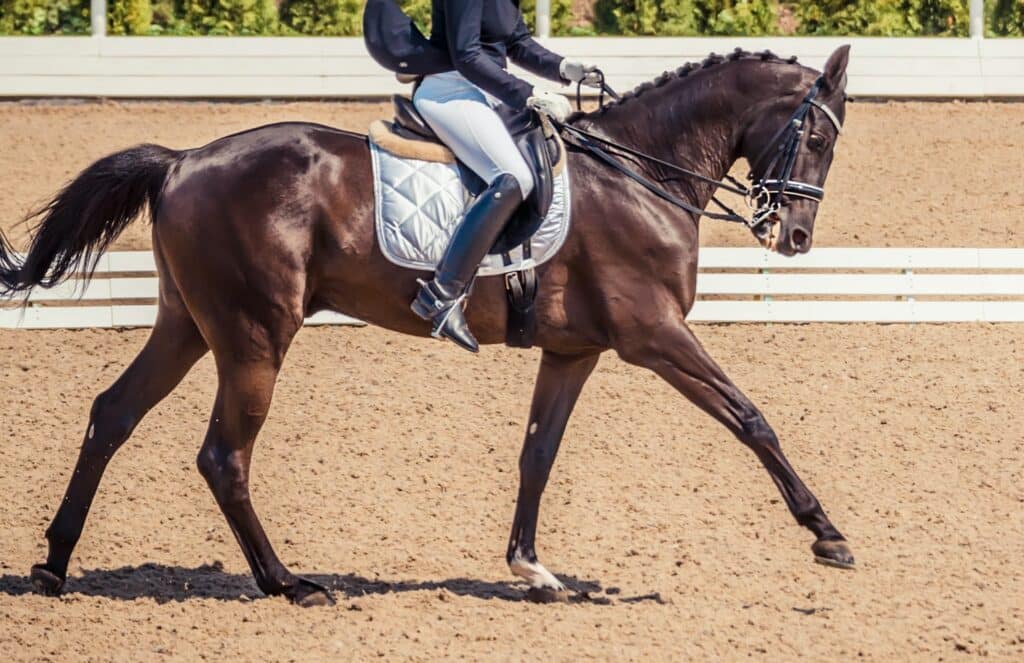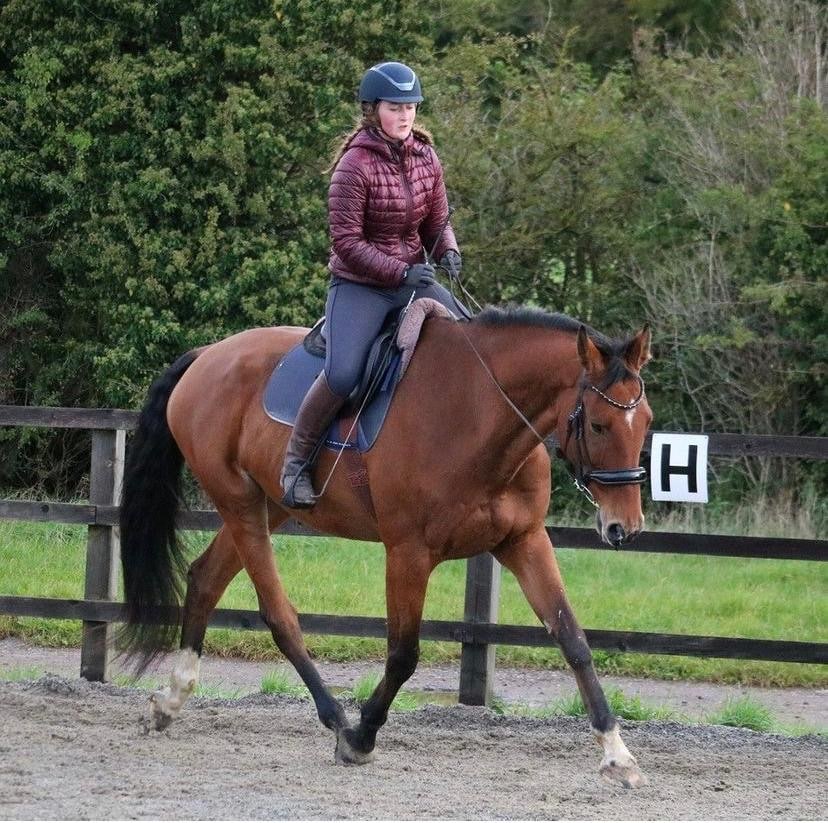Training, Training and Management
Balance – how does a lack of it create tension?
Liz Eaton FBHS, brings her insight into how horse and rider balance influence posture in training
It was during my first ever yoga lesson that I had a major lightbulb moment about training horses and rider position. Being in my 20’s and fit and flexible (or so I thought) I didn’t foresee any problems. However, one pose involved balancing on one leg and stretching in what seemed to be several unreasonable directions at the same time. Already at my edge of balance, my muscles tense with effort, the teacher asked me for more, applying pressure to my screaming muscles to change my posture. As I contemplated my options, from swearing to running away, it occurred to me that we ask this of our horses on a regular basis, in addition they have to carry us as they do it.
Forgive me for stating the obvious but, horses are not designed to carry us on their backs. When we climb on to a young horse’s back, we completely mess up their balance. Their skeleton is not equipped to support us, so they tense their back muscles. This causes them to lose proprioception and control of their limbs; even the most athletic, well conformed horse will have to tighten muscles everywhere to stabilise himself.
We know what a healthy posture looks like, and the temptation is strong to manipulate the horse into this posture. Indeed, good riders are very effective at holding a horse together in balance. This is a useful skill but, it is not educating nor empowering the horse to become a well-balanced, strong and supple athlete. In fact, stiffness, resistance, lack of flexibility, is very often a case of the horse bracing his body to keep his balance.
As I experienced, it is not possible to mould something if it is in a great state of tension. If you force it, the tension is pushed elsewhere in the body. Depending on the horse’s individual conformation and temperament, he will develop a coping mechanism, which at best, will limit performance and at worst, lead to health problems.

So, how do we help horses adapt positively to carrying a rider?
- There are many roads to Rome of course but, there are some simple things that we can all do, not only in the early days of the horse’s training but also, as methods of checking the quality as we progress
- Firstly, work in hand and under saddle to improve the horse’s proprioception and, connection to his feet and the ground
- Moving over different terrain and surfaces. Good old fashioned hacking, combined with work over poles, tarpaulins and ramps
- Teaching the horse to feel through his feet and, adjust his weight accordingly
- Allowing the horse to find his own way under a balanced rider
“It is vitally important that the rider is able to stay centred on board – an easy load to carry”
While it is important to stay safe, over-emphasis on accurate steering can lead a horse and rider into a position of being crooked, in order to travel straight. I often see riders who, in order to keep their horse on the track in a straight line, are sitting totally crooked and, against the horse.
Demanding immediacy and, absolute obedience to the transition aids can also lead to problems, as the horse will hurry to make the transition in the way that seems easiest to him in that moment – often not the most correct.
“Remember slow and right, beats fast and wrong EVERY time. Look for the initiation of the response, and the correctness of the process”
Every correctly executed transition teaches the horse to carry a little more weight on the hind legs, as he uses them to slow himself down and, carry himself forward.

Finally, a very simple thing
When a horse is balanced over all four feet he will relax, start to use his core and free his neck and back. This will allow the rider to begin to shape his posture.
To feel this, trot a 20m circle. Spiral in and out, while playing with the speed. You will find there is a sweet spot; a size of circle and speed, where the horse finds his balance.
At this point you will experience a change in the horse. He will relax and breathe, find a rhythm and, begin to carry the rider with better posture and contact. It may only last a few strides but, you will feel the difference and, more importantly, so will he.
Further reading: Learning Thresholds : How do we create lift and impulsion?
